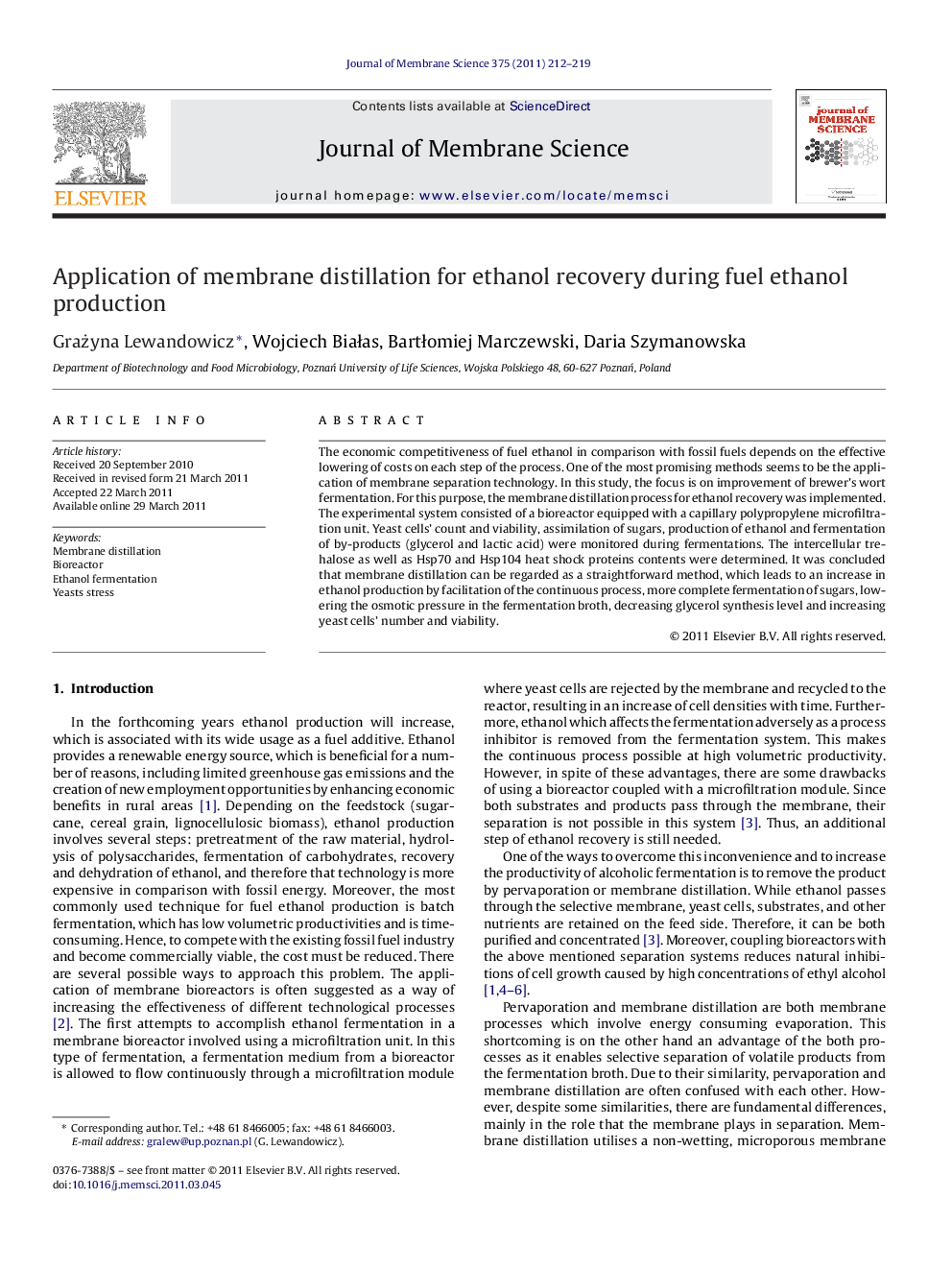| Article ID | Journal | Published Year | Pages | File Type |
|---|---|---|---|---|
| 635764 | Journal of Membrane Science | 2011 | 8 Pages |
The economic competitiveness of fuel ethanol in comparison with fossil fuels depends on the effective lowering of costs on each step of the process. One of the most promising methods seems to be the application of membrane separation technology. In this study, the focus is on improvement of brewer's wort fermentation. For this purpose, the membrane distillation process for ethanol recovery was implemented. The experimental system consisted of a bioreactor equipped with a capillary polypropylene microfiltration unit. Yeast cells’ count and viability, assimilation of sugars, production of ethanol and fermentation of by-products (glycerol and lactic acid) were monitored during fermentations. The intercellular trehalose as well as Hsp70 and Hsp104 heat shock proteins contents were determined. It was concluded that membrane distillation can be regarded as a straightforward method, which leads to an increase in ethanol production by facilitation of the continuous process, more complete fermentation of sugars, lowering the osmotic pressure in the fermentation broth, decreasing glycerol synthesis level and increasing yeast cells’ number and viability.
Graphical abstractFigure optionsDownload full-size imageDownload high-quality image (170 K)Download as PowerPoint slideHighlights► Membrane distillation facilitates continuous fermentation. ► MD unit decreases osmotic pressure in the bioreactor. ► Ethanol productivity with MD is almost 2 times higher than that without MD. ► MD unit in bioreactor decreases yeasts cell stress. ► MD unit causes decrease relative production rate of glycerol.
